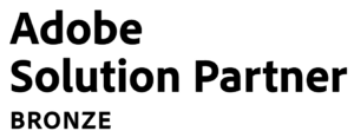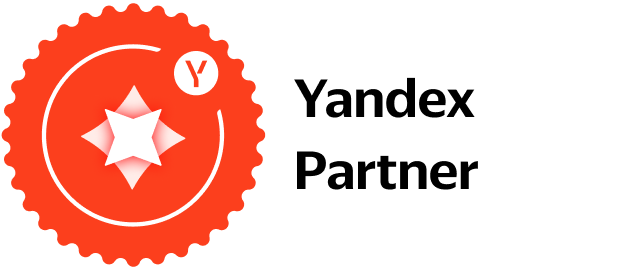The Importance of Content Calendars
Content marketing is now the driving force behind many B2B relationships, with research showing that B2B buyers are now consuming an average of 13 pieces of content before making purchase decisions. It’s no wonder that 91% of B2B marketers are implementing content marketing in their overall strategies.
More surprisingly, despite content marketing’s importance, only 37% of B2B marketers have a documented content marketing strategy, meaning each piece of content often has to be brainstormed and created at the same time. It’s a situation that ultimately leads to stressed out creatives and marketers, desperately praying for inspiration to strike as a looming deadline approaches.
So how can this situation be remedied? How can businesses answer the demands of the 84% of people who expect brands to produce content without overwhelming their teams? That’s where the content calendar comes in.
What is a content calendar?
Put simply, a content calendar maps out a company’s planned content output over a specific time – a month, quarter, or year, for example. They’ll often contain information about who is responsible for each task, as well as the channels over which content will be released.
Content calendars allow marketers to improve their content strategy at every step of their campaign and improve the team’s output efficiency.
62% of B2B corporations with successful content marketing initiatives are backed up by a documented strategy such as a content calendar.
The advantages of a content calendar
As a tool for planning content and streamlining output, content calendars are practically unmatched.
Long-term overview
Without long-term visibility, marketers often struggle to tie individual pieces of content into an overarching strategy that clearly defines the brand. By using a content calendar to visualise overall strategy, marketers and creators can ensure all future content is in alignment with long-term strategic and business goals.
Brainstorm ideas and reduce stress
Nobody wants to deal with the pressure of coming up with new and interesting content ideas while up against the clock.
Using a content calendar to plan at least a month in advance enables teams to work together to brainstorm, meaning creators can spend time researching and producing content instead of having to come up with new ideas on the spot. The end result: more engaging content, and improved marketing outreach.
Planning content in advance also enables team leaders to look at the balance of work – output will suffer if video scripts, white papers and social media all rest on the shoulders of a single person.
Easily track your marketing budget
It can be difficult to make informed budgeting decisions when you don’t know which pieces of content are coming up. A content calendar, outlining output over the course of weeks or months, will help you decide which pieces to promote, and when.
How to create a content calendar
A content calendar can bring impressive benefits to any content marketing team. But how do we go about creating one? Many teams rely on templates to help them get started (have a look below for a template designed by us), but many want to make their own content calendars from scratch. Either way, there is some core information that should always be included to leverage your content calendar to its full potential.

Assigned owners for each project
Most importantly, make sure to assign an owner to act on each project. Whether they’re a writer, designer, or video producer, it’s important to identify who exactly is responsible for ensuring that a particular piece of content meets the deadline.
If you want to go a step further, and we really recommend it, identify who will be taking on each specific task in the project. Take a video post as an example. Who is responsible for writing the script? Who will assemble the visuals and audio? By identifying roles for each specific step of the process, you’ll have better insight into everyone’s workloads, as well as the practicality of your plans.
Identify the channels for each piece of content
An effective content calendar will clearly outline where each piece of content is going to be released. Identifying the channel early on will help you to spot any gaps in your release calendar, as well as providing creators with more guidance on their target audience.
Engagement rates and impressions of previous posts can also help to identify the best times to post. Try including this alongside the intended channel.
Prioritise projects and identify goals
Even the best laid plans can sometimes go to waste. Shifts in company goals or business demands can lead to a sudden need to move team members onto different projects. Assigning tasks in the content calendar a priority level will help identify which tasks can be replaced or moved more easily should the need arise.
Clarifying goals in advance will help prioritise content. Consider whether content is designed to inform and improve brand authority, or if it needs to attract potential customers and drive them to your home page with a strong call to action. Identifying goals early will also enable creators to pitch content more accurately, again resulting in better engagement.
Placeholder slots
While it may seem counter-intuitive, make sure to leave a couple of empty, or placeholder, slots – especially when it comes to your social media content. No matter what industry your company operates in, there will undoubtedly be unforeseen events and news that you’ll be expected to react to if you really want to be an active presence in your community.
How do you decide which content to create?
Now that we’ve covered the advantages of a content calendar, and what kinds of information to include, let’s take a look at the question so many people struggle with – what is the best content to create?
We consider a number of key aspects when helping clients to create and populate their content calendars.
First, it’s important to get to know what’s happening in your industry. When advising clients, we perform in-depth research into the topics and keywords that are currently trending, including which content is currently resonating with audiences.
Then you need to look carefully at your own website and social media feeds. Is there any content missing? Are your competitors offering a key piece of information on their feeds that you have missed? Have you successfully differentiated what makes your services or products unique? If not, these are great topics that can be used for blog posts or social media content. WBS helps clients to identify gaps and recommends the best topics for use in blog content, as well as relevant keywords for inclusion in titles and body text to improve search engine optimisation.
Tips on using a content calendar effectively
Congratulations! With your content brainstormed, priorities organised and tasks assigned, you have your content calendar up and running. Here are a few more tips to ensure that you’re using your content calendar as effectively as possible.
Ensure it’s easily accessible
There’s no point putting in all the work to create a content calendar and then hiding it where nobody can find it. Make sure it is easily accessible to all members of the marketing and content creation teams, so they can regularly check in for any updates or changes.
Designate one person to take ownership of the calendar
If too much of the team’s time is taken up by updating the content calendar, you’re going to miss out on many of the advantages listed above. Instead, identify one person to take ownership of the calendar, and be the person responsible for updating project process and making any potential adjustments. This way, the rest of the team is free to focus on producing the content itself.
Want to implement a content calendar, but not sure where to start?
If, after reading this, you’ve decided that a content calendar is right for your team (which we strongly believe it will be), but don’t know where to start – no worries! Our team of marketing experts have provided a content calendar template that you can use to get your team started. Fill in the form below and it’s yours!








